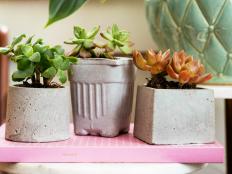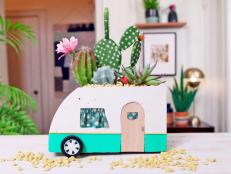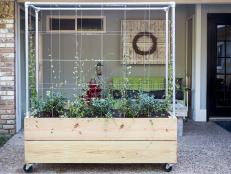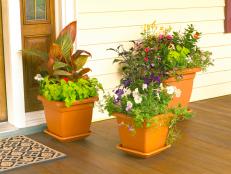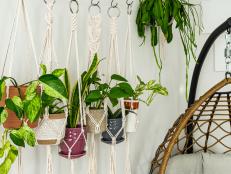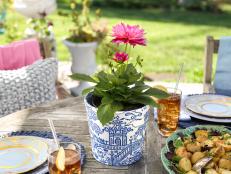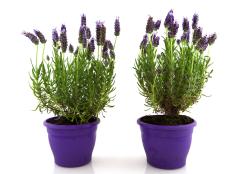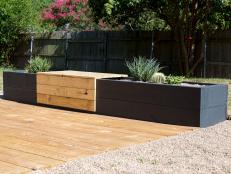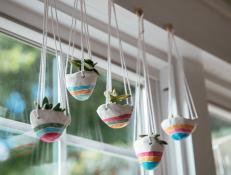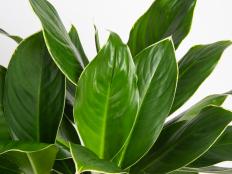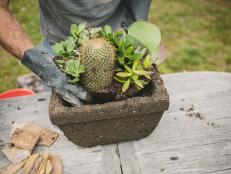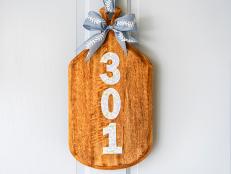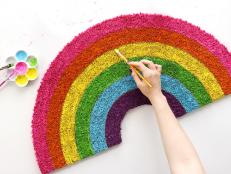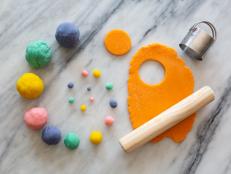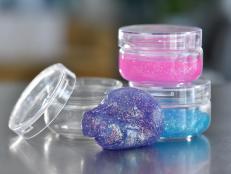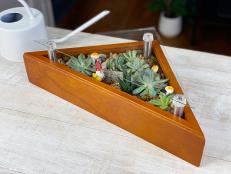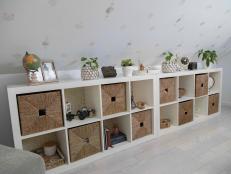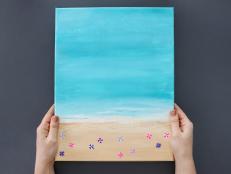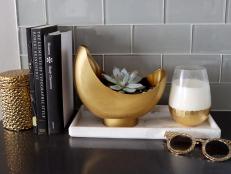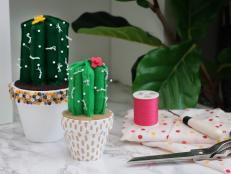Tiering Up: A DIY Hypertufa Pot for All Your Planting Needs
The days of boring, lifeless planters are no more! Say hello to hypertufa. Not only are they great for easy draining, but they are the perfect customizable planter to add spice to your outdoor living areas.

Kamron Sanders

Outdoor planters can be quite the expense. Trying to find one that is both stylish and large enough to hold multiple plants can easily blow your budget. Luckily, with some water, a bag of peat moss, perlite, Portland cement and a short list of tools from around the house, you can easily craft your own planter that rivals the $100+ planters from the store.
Materials Needed
- perlite
- peat moss
- portland cement
- water
- wheel barrow
- shovel
- rubber gloves
- measuring bucket
- (2) small plastic bin
- (1) medium plastic bin
- (1) large plastic bin
- (2) plastic pitchers
- cooking spray
- large plastic drop cloth
- drill + 3/4" spade bit
- gold leafing adhesive
- gold leafing sheets
- scouring pad
- quick-drying cement
Create Mixture

Kamron Sanders

Kamron Sanders

Kamron Sanders

Kamron Sanders

Kamron Sanders
Before any of the dry ingredients are mixed, it is imperative that the plastic molds are mocked-up to ensure that the end results will fit together and allow adequate room for planting. Once a satisfactory mock-up is achieved, pour equal parts of perlite, peat moss and Portland cement into a wheelbarrow. Thoroughly mix the three ingredients before adding one part water. Continue to mix.
Fill Molds

Kamron Sanders

Kamron Sanders

Kamron Sanders
To ensure easy demolding, spray the inside of each mold with cooking spray, being sure to cover all surfaces the hypertufa will touch. Wearing rubber gloves, use your hands to pack the hypertufa mixture around the bottom and sides of each plastic mold around 1/2-inch to 3/4-inch thick. Be sure to pack it in tightly all around, and ensure no holes are left, especially in any corners or seams.
Begin Curing Process

Kamron Sanders

Kamron Sanders
Once each plastic mold has been filled, place them on top of a plastic drop cloth, and fold the drop cloth across the top. Roll the sides of the plastic, and use heavy objects like sticks, rocks or wooden boards to hold the folded edges down to create a relatively airtight seal. This allows for the molds to cure rather than dry as the moisture will be held in during the curing process. Allow three to four weeks for the curing process to take place.
Drill Drain Holes

Kamron Sanders

Kamron Sanders
After the curing process is complete, remove the hardened hypertufa from the molds. Using a drill with a 3/4-inch spade bit, drill drain holes in each of the three tiers but ensure that no drain holes will be covered by each tiers' individual support.
Add Gold Leafing

Kamron Sanders

Kamron Sanders

Kamron Sanders

Kamron Sanders
Now that each section of the planter is hardened and complete with drain holes, they are ready for styling. A distressed gold leafing look was chosen to allow for a stylish accent while not compromising the porous draining qualities of the hypertufa. To achieve this look, lightly spray random sections of the hypertufa with gold foil adhesive, and press the foil into the nooks and crannies of the surface. Once applied, lightly brush the surface with a scouring pad to dull the sheen slightly and distress the foil.
Secure the Tiers

Kamron Sanders
To ensure stability and safety of the planter, assemble the molds in proper order, and ensure they are visibly level. If one piece is out of level, small rocks, gravel or broken pieces of hypertufa can be used to level it. When a satisfactory look is attained, use quick-drying cement to cake around each joint. The cement should be mixed thick enough to build up but thin enough to soak into the crevices of the hypertufa.
Show It Off

Kamron Sanders
Once the joints are dry, it's time to fill this stunning planter with even more beauty. Pack each tier with different herbs to create a gorgeous and tasty crop, or simply plant with your favorite outdoor succulents and flowers. Whether you create a themed, color-coordinated garden or fill it with a mélange of your favorites, this budget-friendly, tiered hypertufa planter is a show-stopping conversation piece made all your own.






